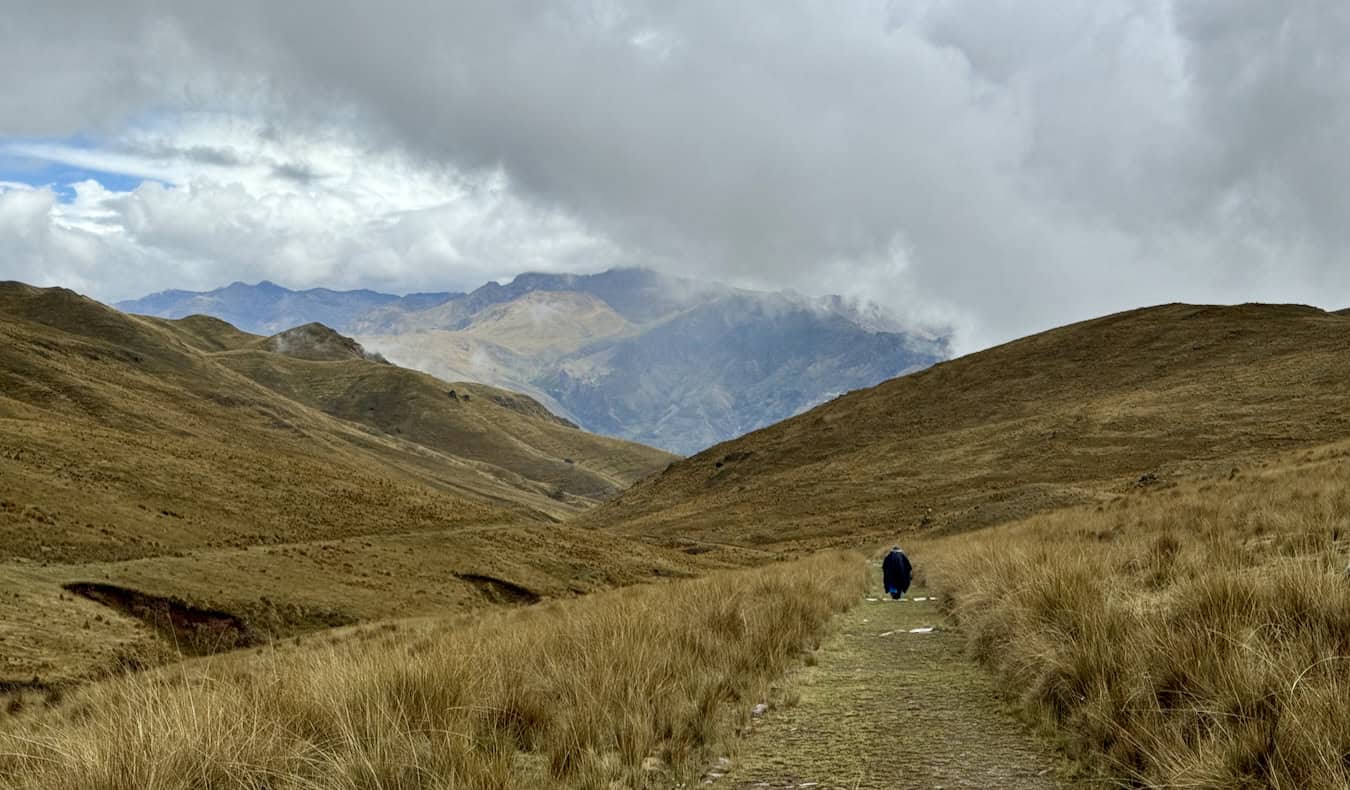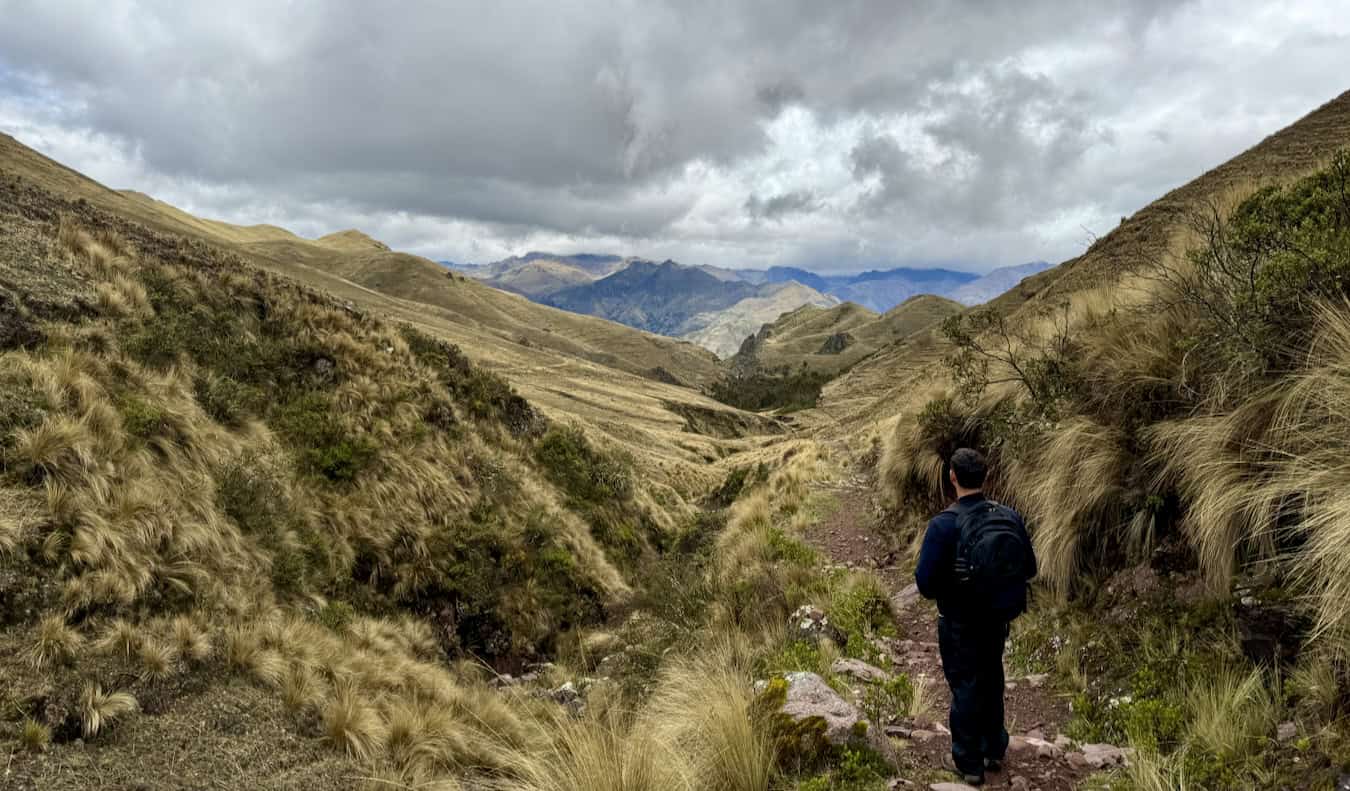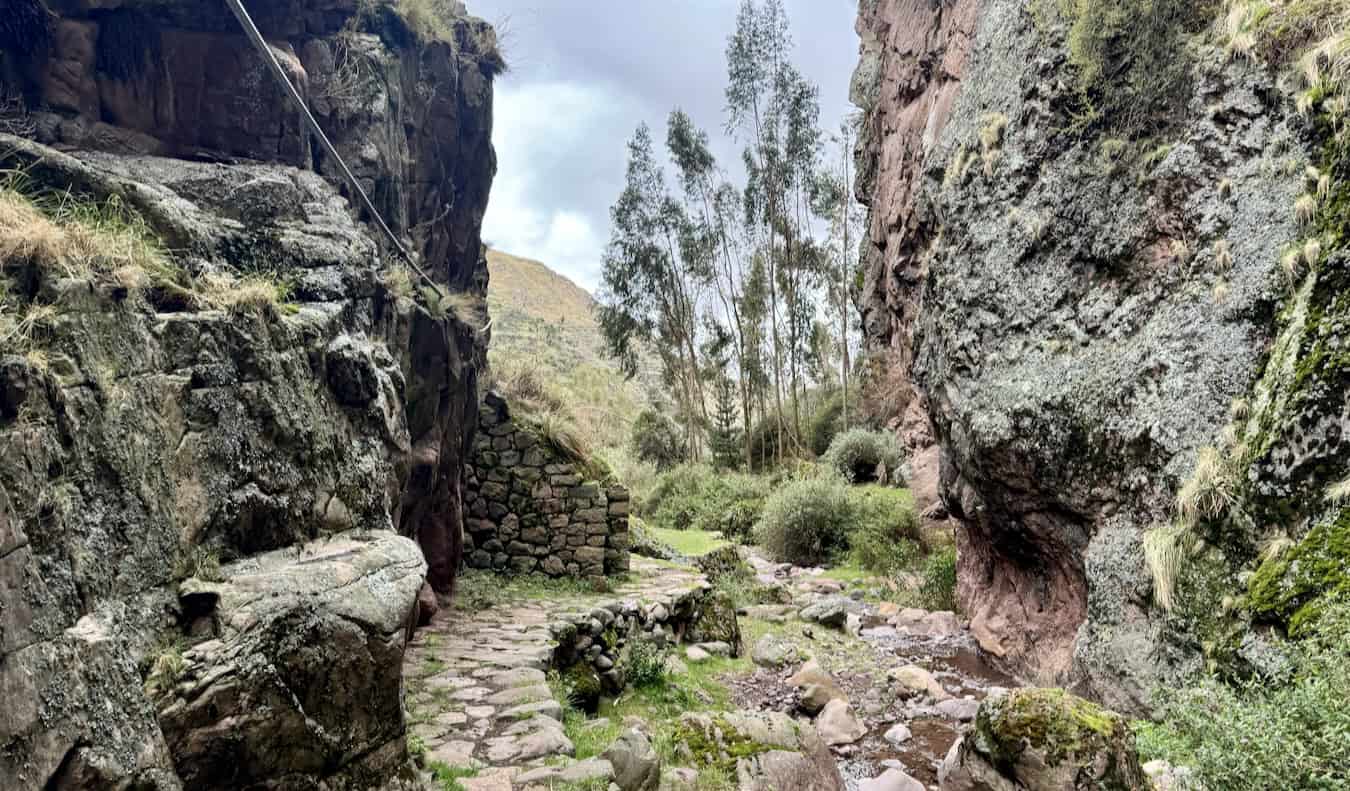
Huchuy Qosqo: Hiking off the beaten path
“How high is this hike again?” I asked as I panted up the mountain trail, the top seeming so far off in the distance.
“12,0000 feet,” our guide Efrain said cheerily as he and the others from the Amazonas Explorers office glided up the trail. He added, “But it will flatten out soon!” as an encouragement.
I was skeptical.
When I first reached out to Amazonas regarding my Machu Picchu hike, I asked them to pick a route that was a little off the beaten path and could be done in a day. The Sacred Valley has a lot to offer; the Incas constructed over 40,000 km of roads throughout their empire. Many of these have been converted into hiking trails. The full-day trek we chose was less traveled and would lead us to an archaeological site named Huchuy Qosqo (Little Cusco in Quechua). Starting an hour outside of Cusco in the small village of Taucca, it goes over some mountains, through abandoned villages and a delightful ravine full of Incan ruins, and winds over a ridge before getting to our final destination: Huchuy Qosqo.
Beginning in the village, we hiked straight up to our first waypoint. The highest I’d ever been was higher than Machu Picchu. I felt it and needed to stop frequently as I wheezed up the mountain. The gentle breeze kept me cool, and the overcast sky hid the sun. The frequent stops made it even easier to enjoy the scenery around me. As we climbed higher, we saw more of the landscape below us and the mountains surrounding us. The barren landscape reminded me a lot of Wyoming’s plains and New Zealand’s Tongariro trek. As far as the eye can see, craggy mountains stretched out in all directions. Below us were villages and farmland. Efrain explained that the lake in front is a part of an hydroelectric dam. Most people are farmers here, mostly for the local markets and potatoes. The larger farms that export food to the States are located elsewhere in the valley. We discussed food quality in Peru and the United States because she had lived in the States. (She thought the food in Peru was better because it wasn’t as processed. It was difficult to disagree. “All those foods that you spend so much money on and call superfoods, we call food. Since the Incas, we’ve eaten it. As the path gently sloped downward, trees and flowers appeared, along with ancient Incan walls, foundations, and buildings that are long gone. We soon came across an abandoned village, mostly made up of collapsed mud buildings and straw roofs. Villages such as this one are found throughout the region where people lead a subsistence life. As young people migrate to the cities they die and the majority of structures fall into disrepair. Efrain told us that there were very few families in the community. Two women dressed in traditional clothing were the only people we saw during our entire trip. They were herding goats. We stopped at an ancient Incan guardhouse near a small waterfall to eat lunch and watch the women’s goats as they grazed. After we had lunch and had a lively conversation about Westerners who come to Peru to take part in ayahuasca ceremonies, and how some of them don’t necessarily want the spiritual aspect but are just looking to get high, we continued through an ancient Incan portal that led us to the last leg of our journey to Huchuy Qosqo. Structures like this were built to keep track of the number of people in the canyon and to protect them. The Incas took meticulous censuses in order to guarantee food supplies. The best day of my trip to Peru was here. Machu Picchu was a special place, but this trek felt even more special. I was able to see rural life, traditional clothing, and the scenery on the trail. It made it feel like a special trek. As we walked along the trail Efrain pointed out ancient Incan stone terraces. Then, as the trail widened we could see the beginning of the Sacred Valley. This surprised me because I hadn’t noticed the sudden steep drop off of the “canyon”. We were thousands of feet higher than the valley floor, even though I thought we were descending the mountain. I am always amazed by how this place was transformed, with underground watering pathways, irrigation systems, stairs between terraces, etc. We entered the ruined town through an ancient gate. Huchuy Qosqo is a little-known city. However, the records that we have show it was the home of the Inca ruler Viracocha. He was exiled after his youngest child, Pachacuti won a decisive battle against rebels against his father. After the battle, Pachacuti proclaimed himself king, and his father spent his last days in Huchuy Qosqo. Huchuy Qosqo was one of the final settlements to be built with mud covered stone walls. (Pachacuti chose to build the famous stone wall Inca structures that we know today). It was raided by the Spanish in 1534, after the Inca Empire collapsed. Like the rest of our trail, the only people at the site were the guards. The site was not as impressive as our journey, and we were tired. I was ready to return to Cusco. We gathered the other hikers, and began our descent. The steep switchbacks did a lot of damage to my knees. Our driver was waiting for us at the bottom of the canyon. “What a hike!” I exclaimed as we drove back. As I looked out the window and saw villages passing, I was smiling big. The hike was the best experience I had while in Peru. With only two days remaining in the country, it was nice to go knowing that I did something special. How to Hike Huchuy Qosqo
You may go alone or with a guide, but I would not recommend the latter. You can take a taxi from Cusco to start the hike and then catch a bus to return. However, the trail itself is difficult to find and sometimes disappears, especially in the beginning. There are also no signs. There are no signs at Huchuy Qosqo that describe what you’re looking at, how the landscape looks, or even the history of these ruins. You’ll need to hire a guide if you want context. Amazonas Explorer was my choice for Machu Picchu.
Note
: Take sunscreen! I returned to my hotel with a blazing sunburn. The lobsters weren’t as red as me. It was raining and cloudy, so I didn’t notice the sun. But at this altitude the UV is strong, and I paid for it. Don’t make the same mistake as me! Book Your Trip to Peru – Logistical Tips & Tricks
Book your Flight
Use Skyscanner for a cheap flight. My favorite search engine is Skyscanner because it searches websites and airlines all over the world, so I know that no stone will be left unturned.
Book Your Accommodation
You can book your hostel with Hostelworld as they have the biggest inventory and best deals. If you want to stay somewhere other than a hostel, use Booking.com as they consistently return the cheapest rates for guesthouses and cheap hotels.
If you’re looking for hostels in Cusco, here is a list of my favorites.
Don’t Forget Travel Insurance
Travel insurance will protect you against illness, injury, theft, and cancellations. Travel insurance will protect you against illness, injury, theft and cancellations. My favorite companies that offer the best service and value are:
Looking for the Best Companies to Save Money With?
Check out my resource page for the best companies to use when you travel. Looking for the Best Companies for Saving Money?
Check my resource page to find the best companies for you to use while traveling. Here’s a list of all the companies I use when I travel to save money. You will also save money by using them. Want More Information about Peru? Visit my comprehensive destination guide for Peru to get even more tips on planning your trip!



